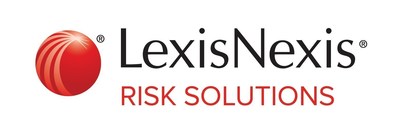LexisNexis Risk Solutions True Cost of Fraud Study: SNAP and IES - Reveals every $1 of Fraud Now Costs Agencies $3.93
LexisNexis Risk Solutions released its third annual True Cost of Fraud Study for SNAP Agencies and Integrated Eligibility Systems (IES). The study reveals that every $1 of fraud now costs agencies $3.93, with agencies impacted by EBT skimming and account takeovers losing an average of $4.48 per $1 lost. Key findings include:
1. Rising fraud costs, particularly through EBT skimming and account takeovers
2. Increased fraud risks due to IES expansion across Human Services programs
3. Application processing delays impacting staff and beneficiaries
4. Underutilization of fraud detection solutions at the application stage
The study emphasizes the need for agencies to adopt a proactive approach, integrating modernization efforts with early fraud detection to lower costs, reduce errors, and improve service delivery.
LexisNexis Risk Solutions ha pubblicato il suo terzo studio annuale sul vero costo della frode per le agenzie SNAP e i sistemi di idoneità integrata (IES). Lo studio rivela che ogni $1 di frode ora costa alle agenzie $3.93, con le agenzie colpite da skimming EBT e takeover degli account che perdono in media $4.48 per ogni $1 perso. I risultati principali includono:
1. Aumento dei costi della frode, in particolare attraverso lo skimming EBT e i takeover degli account
2. Maggiori rischi di frode a causa dell'espansione degli IES nei programmi dei servizi umani
3. Ritardi nell'elaborazione delle domande che impattano su personale e beneficiari
4. Sottoutilizzo delle soluzioni di rilevamento della frode nella fase di domanda
Lo studio sottolinea la necessità per le agenzie di adottare un approccio proattivo, integrando gli sforzi di modernizzazione con la rilevazione precoce delle frodi per abbattere i costi, ridurre gli errori e migliorare la qualità del servizio.
LexisNexis Risk Solutions publicó su tercer estudio anual sobre el verdadero costo del fraude para las agencias SNAP y los Sistemas de Elegibilidad Integrada (IES). El estudio revela que cada $1 de fraude ahora le cuesta a las agencias $3.93, con las agencias afectadas por el skimming de EBT y los toma de cuentas perdiendo un promedio de $4.48 por cada $1 perdido. Las principales conclusiones incluyen:
1. Aumento de los costos del fraude, especialmente a través del skimming de EBT y los toma de cuentas
2. Incremento de los riesgos de fraude debido a la expansión de IES en los programas de Servicios Humanos
3. Retrasos en el procesamiento de solicitudes que impactan al personal y a los beneficiarios
4. Bajo uso de soluciones de detección de fraude en la etapa de solicitud
El estudio enfatiza la necesidad de que las agencias adopten un enfoque proactivo, integrando los esfuerzos de modernización con la detección temprana del fraude para reducir costos, minimizar errores y mejorar la entrega de servicios.
LexisNexis Risk Solutions는 SNAP 기관 및 통합 자격 시스템(IES)을 위한 제3회 연례 실제 사기 비용 연구를 발표했습니다. 이 연구는 사기 $1당 기관에 $3.93의 비용이 발생한다고 밝혔으며, EBT 스키밍 및 계정 탈취에 영향을 받은 기관은 잃은 $1당 평균 $4.48를 잃고 있습니다. 주요 발견 내용은 다음과 같습니다:
1. EBT 스키밍 및 계정 탈취를 통해 증가하는 사기 비용
2. 인적 서비스 프로그램 전반에 걸친 IES 확장으로 인한 증가한 사기 위험
3. 직원 및 수혜자에게 영향을 미치는 신청 처리 지연
4. 신청 단계에서 사기 탐지 솔루션의 저조한 활용
이 연구는 기관들이 비용 절감, 오류 감소, 서비스 제공 개선을 위해 조기 사기 탐지와 현대화 노력을 통합하여 사전 대응 접근 방식을 채택할 필요성을 강조합니다.
LexisNexis Risk Solutions a publié sa troisième étude annuelle sur le véritable coût de la fraude pour les agences SNAP et les systèmes d'éligibilité intégrés (IES). L'étude révèle que chaque 1 $ de fraude coûte désormais aux agences 3,93 $, les agences touchées par le skimming EBT et les usurpations de compte perdant en moyenne 4,48 $ pour chaque dollar perdu. Les principales conclusions incluent :
1. Augmentation des coûts de fraude, en particulier par le biais du skimming EBT et des usurpations de compte
2. Risques de fraude accrus en raison de l'expansion des IES dans les programmes de services humains
3. Retards dans le traitement des demandes affectant le personnel et les bénéficiaires
4. Sous-utilisation des solutions de détection de fraude au stade de la demande
L'étude souligne la nécessité pour les agences d'adopter une approche proactive, en intégrant les efforts de modernisation avec une détection précoce des fraudes pour réduire les coûts, diminuer les erreurs et améliorer la qualité du service.
LexisNexis Risk Solutions hat seine dritte jährliche Studie über die tatsächlichen Kosten von Betrug für SNAP-Agenturen und integrierte Berechtigungssysteme (IES) veröffentlicht. Die Studie zeigt, dass jeder $1 Betrug den Agenturen jetzt $3,93 kostet, wobei Agenturen, die durch EBT-Skimming und Kontoübernahmen betroffen sind, im Durchschnitt $4,48 pro $1 Verlust verlieren. Die wichtigsten Erkenntnisse umfassen:
1. Steigende Betrugskosten, insbesondere durch EBT-Skimming und Kontoübernahmen
2. Zunehmende Betrugsrisiken aufgrund der Erweiterung von IES in den Sozialdiensten
3. Verzögerungen bei der Antragsbearbeitung, die sich auf Mitarbeiter und Leistungsempfänger auswirken
4. Unterauslastung von Betrugserkennungslösungen in der Antragsphase
Die Studie hebt die Notwendigkeit hervor, dass Agenturen einen proaktiven Ansatz verfolgen, indem sie Modernisierungsbemühungen mit einer frühzeitigen Betrugserkennung kombinieren, um Kosten zu senken, Fehler zu reduzieren und die Servicequalität zu verbessern.
- Expanded study scope to include multiple integrated eligibility systems (IES)
- Focus on application processing time (APT) and payment error rates (PER)
- Agencies integrating modernization with early-stage fraud detection see improvements in processing times and reduced fraud costs
- Fraud costs increased to $3.93 per $1 lost, up from previous years
- IES fraud costs rose to $4.04 per $1 lost, up from $3.85 last year
- Agencies face challenges in verifying eligibility and identity data, leading to processing backlogs
- Underutilization of fraud detection solutions at the application stage
Insights
The rising cost of fraud in SNAP and IES programs is alarming, with agencies now losing
The expansion of Integrated Eligibility Systems (IES) across Human Services programs has inadvertently increased fraud risks, with costs rising to
Agencies struggling with outdated systems and manual processes face significant challenges in timely benefit distribution and fraud prevention. The focus on post-issuance fraud prevention rather than early-stage detection is a critical weakness. Implementing advanced fraud detection technologies at the application stage could significantly reduce processing times, fraud costs and improve overall program integrity.
The rise of sophisticated fraud tactics, including the use of AI and bots by both domestic and international criminal groups, represents a significant escalation in the threat landscape for government aid programs. This evolution in criminal methods demands an equally advanced response in cybersecurity measures.
The underutilization of fraud detection solutions at the application stage is a critical vulnerability. Implementing robust identity verification and fraud detection technologies early in the process could significantly mitigate risks associated with synthetic identities and malicious bots.
Agencies need to prioritize the modernization of their systems with a focus on integrating advanced fraud detection capabilities. This includes leveraging AI and machine learning for pattern recognition, real-time data analysis and predictive modeling to stay ahead of evolving fraud tactics. Additionally, enhancing data sharing and collaboration between agencies could create a more comprehensive defense against cross-program fraud attempts.
Fraud Surges in SNAP - Over One-Third of Agencies Report Spike in Identity Theft and EBT Skimming, Especially Among Multi-Program Systems
The 2024 study features a broad scope of integrated eligibility systems (IES), including:
- Supplemental Nutrition Assistance Program (SNAP),
- Center for Medicaid Services (CMS),
- Special Supplemental Nutrition Program for Women, Infants and Children (WIC),
- Temporary Assistance for Needy Families (TANF), and
- Low Income Home Energy Assistance Program (LIHEAP).
The 2024 study was expanded to focus on SNAP agencies' application processing time (APT) and payment error rates (PER) and the downstream impacts to beneficiary and case worker experience. The study also examined the degree to which SNAP agencies have implemented operational modernization features to support fraud detection efficiencies while minimizing delays and negative impacts to program beneficiaries and agency staff.
Key Findings:
- Rising Fraud Costs: SNAP agencies are facing increasing costs as fraud continues to grow, particularly through EBT skimming and account takeovers. Agencies impacted by these types of fraud report losing an average of
$4.48 $1 $3.93 $1 - System Integration Adds Complexity: The expansion of IES across Human Services programs has increased fraud risks. With more access points for bad actors, fraud costs have risen to
$4.04 $1 $3.85 - Delays Impacting Staff and Beneficiaries: Outdated systems, manual processes, and resource limitations contribute to application processing delays for SNAP agencies. These delays negatively affect both the caseworker experience and the speed at which benefits reach those in need. Major challenges include the inability to quickly verify eligibility and identity data, leading to processing backlogs and increased worker stress.
- Modernization and Fraud Detection are Critical: Agencies struggle to combat fraud without hindering the beneficiary experience. Malicious bots, synthetic identities, and challenges in tracking transaction sources are absorbing significant resources. Fraud detection solutions remain underused at the application stage, with most agencies focusing on post-issuance prevention. However, agencies that integrate modernization with early-stage fraud detection realizing improvements in processing times, reduced fraud costs, and enhanced experiences for both workers and beneficiaries.
"SNAP has become more crucial than ever as millions of Americans face the dual crises of hunger and soaring food prices," said Haywood Talcove, CEO of LexisNexis Risk Solutions Government. "What is particularly alarming is the rise in highly sophisticated criminal tactics, with both domestic and international groups exploiting advanced technologies like artificial intelligence and bots to target critical government aid programs. Our latest study highlights the immense challenges agencies face—not only in preventing fraud but in modernizing systems to ensure that food assistance reaches those who need it most. As these threats evolve, so too must our defenses, because this is about more than just fighting fraud—it is about protecting the livelihoods of vulnerable families across the country."
The 2024 True Cost of Fraud™ Study highlights the escalating costs of fraud for SNAP agencies, driven by sophisticated fraud schemes and outdated processes. Agencies that adopt a proactive approach—integrating modernization efforts with early fraud detection—are better equipped to lower fraud costs, reduce errors, and improve service delivery for beneficiaries.
Download a copy of the True Cost of Fraud™ Study for Supplemental Nutrition Assistance Program (SNAP) Agencies and Integrated Eligibility Systems (IES).
About LexisNexis Risk Solutions
LexisNexis® Risk Solutions harnesses the power of information and advanced analytics to provide insights that help businesses and governmental entities reduce risk and improve decisions to benefit people around the globe. We provide data and technology solutions for a wide range of industries including government, insurance, financial services and healthcare. Headquartered in metro
Media Contact:
Paul Eckloff
LexisNexis Risk Solutions
Mobile: +1.202.941.6986
Paul.Eckloff@lnssi.com
![]() View original content to download multimedia:https://www.prnewswire.com/news-releases/lexisnexis-risk-solutions-true-cost-of-fraud-study-snap-and-ies---reveals-every-1-of-fraud-now-costs-agencies-3-93--302282163.html
View original content to download multimedia:https://www.prnewswire.com/news-releases/lexisnexis-risk-solutions-true-cost-of-fraud-study-snap-and-ies---reveals-every-1-of-fraud-now-costs-agencies-3-93--302282163.html
SOURCE LexisNexis Risk Solutions








